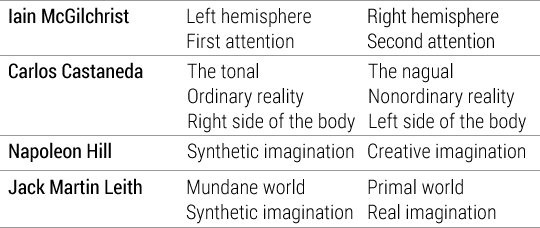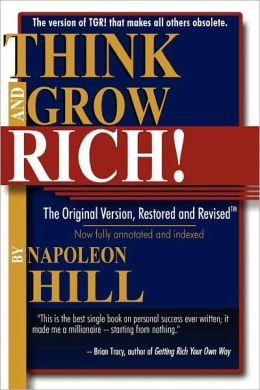

Iain McGilchrist
Dr Iain McGilchrist is a British psychiatrist, neuroscience researcher, philosopher and literary scholar.
In September 2025 he was appointed Chancellor of Ralston College, located in Savannah, Georgia, USA.
He is best known for his work on how the brain’s hemispheres differ in the way they attend to the world, and how each hemisphere contributes in its own way to perception, thought and behaviour. This supersedes the debunked yet still prevalent split-brain theory developed in the 1960s by Roger Sperry and others.
Iain McGilchrist came to prominence after the publication of his book The Master and His Emissary: The Divided Brain and the Making of the Western World in October 2009.
Ian McGilchrist’s thesis is that for us as human beings there are two fundamentally opposed realities, two different modes of experience; that each is of ultimate importance in bringing about the recognisably human world; and that their difference is rooted in the bihemispheric structure of the brain. It follows that the hemispheres need to co-operate, but he believes they are in fact involved in a sort of power struggle, and that this explains many aspects of contemporary Western culture.
Jes Oliphant, The Master and His Emissary Book Summary – Iain McGilchrist (minor typo corrected)
Iain McGilchrist’s most recent book, The Matter with Things: Our Brains, Our Delusions, and the Unmaking of the World, was published in November 2021.If I am right, that the story of the Western world is one of increasing left hemisphere domination, we would not expect insight to be the key note. Instead, we would expect a sort of insouciant optimism, the sleepwalker whistling a happy tune as he ambles towards the abyss.
Iain McGilchrist, The Master and his Emissary
Read more about Iain McGilchrist eslewhere on this website
The Matter with Things—one videoed conversation per chapter (29 in total)
Resources for people exploring Iain McGilchrist’s work
Recent videos featuring Iain McGilchrist and his work
Jill Bolte Taylor
Dr Jill Bolte Taylor is a Harvard-trained and published neuroscientist (specifically, a neuroanatomist).
In 1996 she experienced a severe haemorrhage in the left hemisphere of her brain, causing her to lose the ability to walk, talk, read, write, or recall any of her life.
She shares her experiences in a TED talk titled My stroke of insight.
Summary of left and right hemisphere characteristics mentioned in her TED talk

Download full transcript (pdf — 6 pages)
Read more abut Jill Bolte Taylor elsewhere on this website
Visit Jill Bolte Taylor’s official website
View the Wikipedia entry for Jill Bolte Taylor
Carlos Castaneda
Carlos Castaneda PhD (1925 – 1998) was a Peruvian-American anthropologist and author of 12 books, most of them chronicling his apprenticeship with don Juan Matus, a Yaqui Indian ‘sorcerer’ or man of knowledge.
Although academics have dismissed Castaneda’s books as works of fiction, they contain much wisdom and provide many insights.
In Tales of Power (pdf of entire book), don Juan teaches Castaneda about the tonal (“toh‑na’hl”) and the nagual (“nah‑wa’hl”).
In essence, the tonal, associated with the right side of the body, corresponds with the brain’s left hemisphere and what I have named mundane world, while the nagual, associated with the left side of the body, corresponds with the right hemisphere and primal world.

You can learn more by an open minded reading of The totality of oneself: the tonal and the nagual, which is an extended excerpt from Tales of Power. Don Juan, with his customary wit and playfulness, explains that the moment you try to define the nagual (right hemisphere, primal world) it becomes part of the tonal (left hemisphere, mundane world). Whatever you say it is, it’s not that.
Visit the Carlos Castaneda resources hub elsewhere on this websiteThe tao that can be told
is not the eternal Tao
The name that can be named
is not the eternal Name.The unnamable is the eternally real.
Naming is the origin
of all particular things.Tao Te Ching, Section 1 | Read this passage in context
Creative Victory | Reflections on the Collected Works of Carlos Castaneda
This is an important book for the aspiring newcreator. It’s not an easy read but your effort will be rewarded.
Napoleon Hill
Oliver Napoleon Hill (1883 – 1970) was an American author known for his book Think and Grow Rich!
First published in 1937, it became one of the best-selling self-help books of all time.
I have read many books detailing the creative process. Think and Grow Rich! is one of the best.
Do not be put off by the title or the exclamation mark. Its potential value to newcreators is immense.
In Chapter 6 of the book, Napoleon Hill contrasts synthetic imagination with creative imagination:Riches cannot always be measured in money!
Money and material things are essential for freedom of body and mind, but there are some who will feel that the greatest of all riches can be evaluated only in terms of lasting friendships, harmonious family relationships, sympathy and understanding between business associates, and introspective harmony which brings one peace of mind measurable only in spiritual values!
Napoleon Hill, Think and Grow Rich! 1938 edition, published by The Ralston Society, Meriden, Conn., USA
In place of creative imagination I have adopted the term pure imagining for the following reasons:SYNTHETIC IMAGINATION: Through the faculty of synthetic imagination, one may arrange old concepts, ideas, or plans into new combinations1. This faculty creates nothing. It merely works with the material of experience, education, and observation with which it is fed. It is the faculty used most by the inventor, with the exception of he who draws upon the creative imagination, when he cannot solve his problem through synthetic imagination.
CREATIVE IMAGINATION: Through the faculty of creative imagination, the finite mind of man has direct communication with Infinite Intelligence2. It is the faculty through which ‘hunches’ and ‘inspirations’ are received. It is by this faculty that all basic, or new ideas are handed over to man.
1. Today, this is known as combinatorial creativity.
2. Infinite Intelligence is also known as spirit, source, intent and the Tao, and by various other names (read more about Infinite Intelligence and view the synonyms). But the name is irrelevant. Remember, the Tao that can be told is not the eternal Tao.
- Both forms of imagination could be considered creative.
- The contrast with synthetic imagination is stronger.
- Imagination is an abstract noun, a no-thing, whereas imagining is a verb, an activity.
- Pure imagining signifies a co-creative partnership with intent (aka Infinite Intelligence, spirit, Creative Action etc. — view list of synonyms and related terms).
When ordering Think and Grow Rich! be sure it’s this version

Think and Grow Rich! The Original Version, Restored and Revised, with Revisions, a Special Foreword and Annotations by Ross Cornwell.
Order from Amazon UK (this is not an affiliate link)
Alternatively you can download a pdf copy here, although it’s not the version specified above.
You can also download the book as an editable Word document here, courtesy of Doug Keesler.
Read more about Napoleon Hill and Think and Grow Rich! elsehere on this website
View the Wikipedia entry for Napoleon Hll
Index to entire site
Search the site
Not case sensitive. Do not to hit return.

